British F-35 Lightning jets are now on-board HMS Queen Elizabeth.
Flown by Royal Navy and Royal Air Force pilots, the Lightning jets are embarking on the carrier to conduct operational trials off the East Coast of the USA, say the Royal Navy.

This follows successful developmental trials last year with US Lightning jets, where forces conducted 500 take offs and landings over their 11-week period at sea.
Defence Secretary Ben Wallace said:
“This is another step towards the UK’s carrier strike capability becoming fully operational. The bringing together of the UK Lightnings on the first in class HMS Queen Elizabeth paves the way for the world’s most up to date, fully integrated carrier force.”
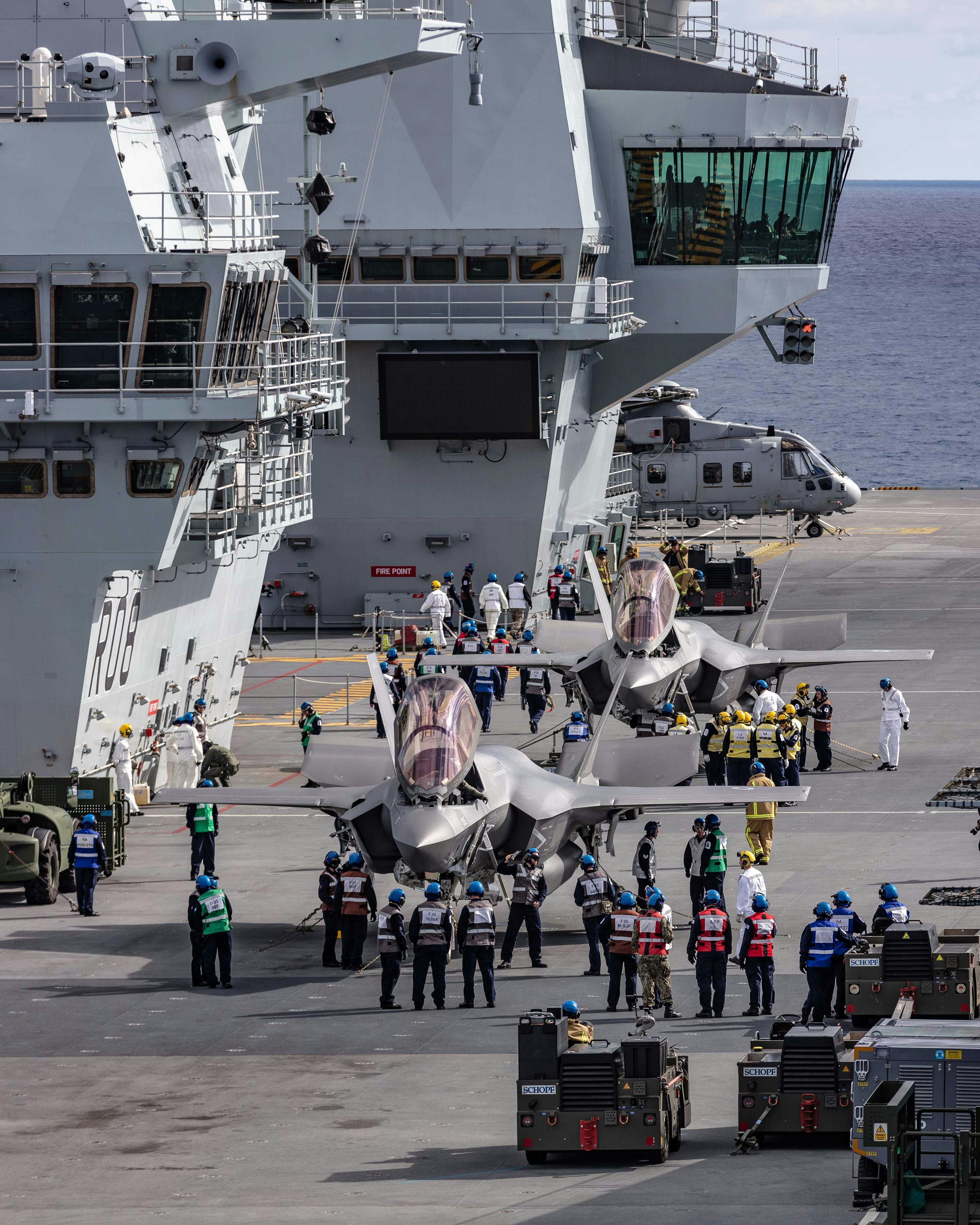
Assistant Chief of the Naval Staff for Aviation and Carrier Strike, Rear Admiral Martin Connell, Royal Navy, said:
“Embarking UK Lightning jets in HMS Queen Elizabeth for the very first time is a major milestone for Royal Navy and Royal Air Force aviation and for our development of the 5th generation Carrier Strike Group capability.
Once again, the support from our US Navy and US Marine Corps colleagues in the United States has been incredible and undoubtedly helped bring us to this moment: making maritime aviation history.”
Air Officer Commanding Number 1 Group, Air Vice-Marshal Harvey Smyth, Royal Air Force, said:
“WESTLANT19 marks an extremely significant milestone on our 10-year journey to establishing our renewed Carrier Strike capability.
Bringing our own Lightnings onboard HMS Queen Elizabeth for the first time gives us the opportunity to conduct critical operational testing. With the Royal Navy and Royal Air Force operating so closely together, these are incredibly exciting times for embarked Combat Air.”
The MoD say that these trials are aimed at ‘end-to-end’ testing of the aircraft and personnel to ensure the aircraft are compatible with the carrier. The tests involve mission planning, arming the aircraft using the ship’s Highly Automated Weapon Handling System, flying missions and debriefing on completion.
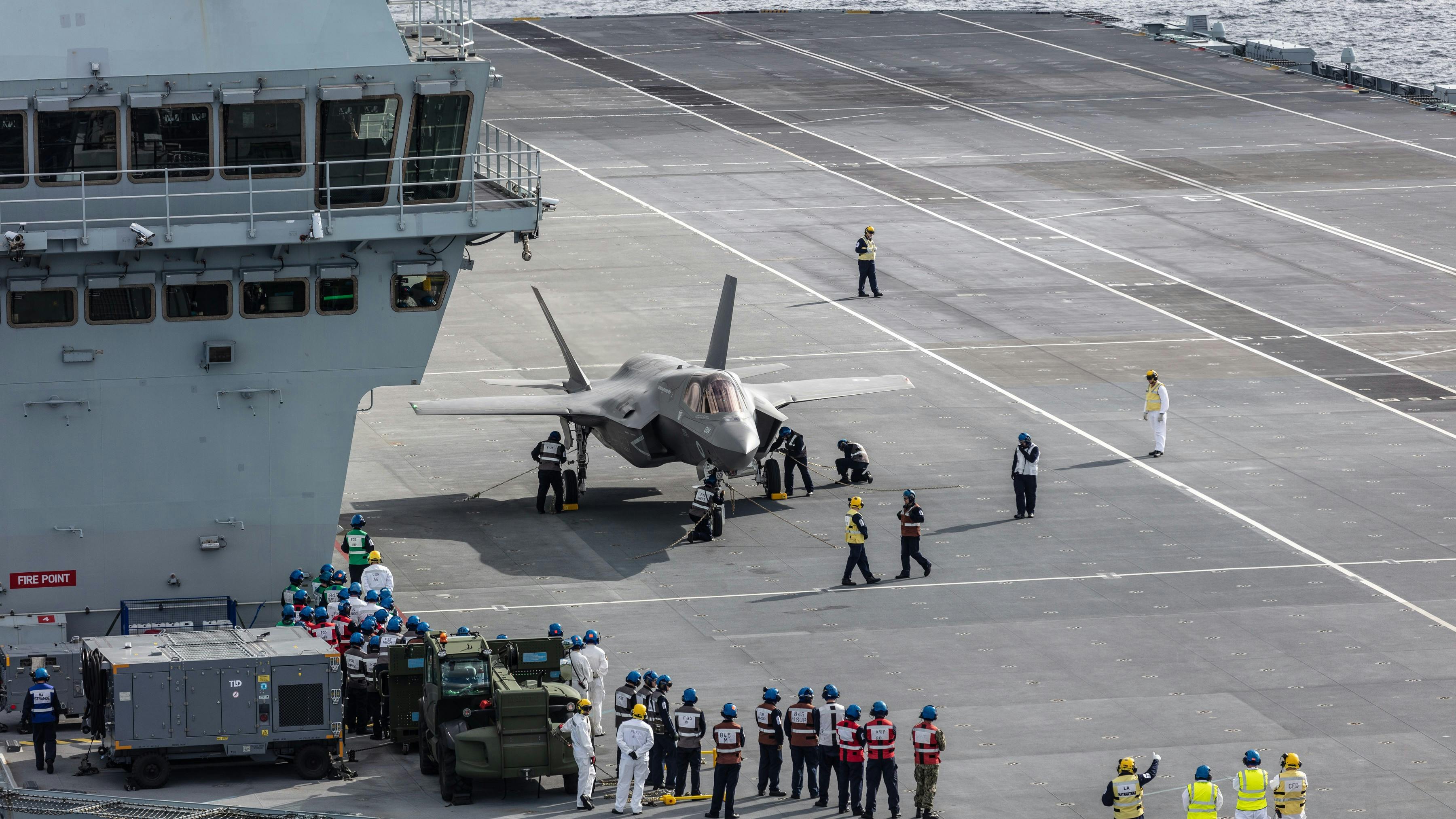
“The landings on HMS Queen Elizabeth are part of the ‘WESTLANT 19’ Carrier Strike Group deployment. Once fully operational, UK Carrier Strike Group will be a formidable force around the world, using a number of platforms to work alongside our allies.”

During this time, the aircraft carrier will be escorted by Type 45 destroyer HMS Dragon, submarine hunter HMS Northumberland, tanker RFA Tideforce and Merlins from 814, 820 and 845 Naval Air Squadrons, Wildcats from 815 squadron and Royal Marines from Lima Company, 42 Commando.
Commander of the Strike Group, Commodore Mike Utley, Royal Navy said:
“Getting to this point of embarking UK Lightning jets into our British-built carrier has been a significant joint undertaking by industry and military – both ours, and those from the United States.
We will take the jets from the successful developmental phase we achieved last year through to a more operational footing, so we are confident that the jets, the carrier and our destroyers and frigates will function seamlessly together.”
The UK will declare Initial Operating Capability for Carrier Strike by the end of 2020. The first operational deployment for HMS Queen Elizabeth 617 Squadron and a squadron of US Marine Corps Lightning jets is due to take place in 2021.


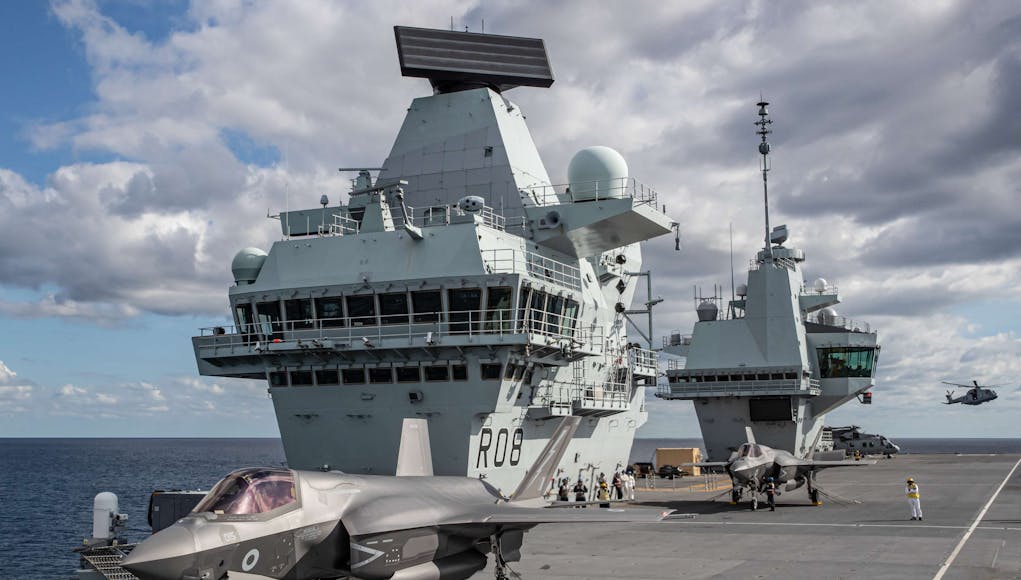



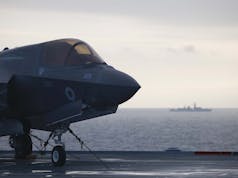

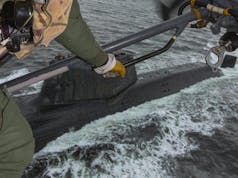



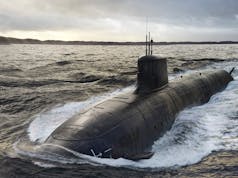

Exciting times Indeed ☺️
Here we go but is this all the f35b that are being sent?
I wonder how much video footage will ever be released from this?
I’m pretty sure they could make a decent video of the tests without showing any secret stuff.
The BBC did a 3 part documentary on the sea trials. Someone here said a while back that the documentary team was still aboard for the very first F-35 tests. Hopefully they are still aboard now and will release a follow-on episode or set of episodes once they feel that they have enough footage.
My guess is that we might have to wait a bit, maybe another 3-parter perhaps ending at the point when she is first declared operational. I think she’s initially going to be declared operational for rotary only isn’t she but if that was the milestone for the next BBC documentary or series it would still include these and the previous fixed-wing tests.
Chris Terrill is the embedded broadcaster covering the QE trials, Julian.
Thanks Gavin. And in there for the long haul so probably still on board as we speak?
I just looked at his Wikipedia page (https://en.wikipedia.org/wiki/Chris_Terrill) and listed in the big “Filmography” table is the three-parter already aired that I mentioned, “2016 – 2018 Britain’s Biggest Warship (series)”, but I also see “2018-2019 “Britain’s Biggest Warship At Sea (series 2) – The ongoing story of HMS Queen Elizabeth (in production)” so that basically confirms my last post and also says it will be a series, presumably another three-parter, as opposed to a single episode update.
Do you have any thoughts about what milestone might be chosen to end this upcoming series on?
No, just looking forward to the series. Met Chris once in another capacity and he’s very genuine with no angle other than the day to day life of the ship.
Regards
No. Both of these are from 17 squadron. 3 aircraft from 617 squadron look set to embark soon, having left RAF Marham earlier this week – and it looks like 207 will be involved too. They’ll also be joined by USMC aircraft at some point.
There’s some debate over the amount of F35 which will embark, with 6, 7 and 9 UK airframes all being claimed by various publications.
As an amendment to myself, it looks like the other aircraft from 17 squadron will also embark. Four aircraft embarked today, not sure what squadrons the other two are from though from specifically though.
These two are from 17 squadron, the test unit based in the US – five more are on the way from 617 at Marham, and 4 USMC aircraft will also participate in this exercise.
I wonder if they plan to test how the crew operate with a full complement of 36-48 F35 (with assistance from the US of course) before she completes her first operational deployment in 2021.
Perhaps the ship with a full, parked, complement of planes will be an episode milestone.
It’s been a long time coming! I still can’t be reconciled by the Cameron Government’s decision to scrap the Harrier carriers when they did, and in the process expose the RN in such a way? All I can say, it was more in luck than judgment.
Indeed Maurice, quite the gamble, luckily for us, it worked out better than his personal gamble on the BREXIT referendum!
The cuts over the last 30 years are absolutely criminal and reckless with our national security.
At least the new Carrier capability, is far more than replacing the small invincible class ships, we are embarking on a true next generation carrier capability.
We do not know what the political complexion of Westminster will be, once the Brexit question is answered one way or another? Until there is clarity, I just hope above hope, that the Royal Navy does not become a political football once again?
He always was a chancer and one greatly financed by his wife’s father to boot.
I believe that this is the first time any of these pilots have actually landed a F35 on an aircraft carrier.
Why isn’t this taking part over the Clyde?
I will get my coat…
36 F35 jets aboard would look amazing all lined up and taking off, will it ever happen though.
Henry Jones has shared some more photos of this on his Twitter feed. Of the four embarked F35 so far, 3 were lined up on the port side. They look lost on the flight deck and I mean that in a good way. It really shows how truly massive these ships are – they’re even bigger in person!
I don’t think we can stipulate what can or might happen, as operational deployments will always change, as will aircraft availability. It’s likely we’ll see the ships deploy with ~24 F35 and additional helicopters operationally. I’d wager we’d only really see larger numbers in a national emergency or as a photo op – though it would sure be one expensive photo.
Out if interest can anyone explain to me why it is that the QE went over to the US and then aircraft from 617 sqn flew over. The flight would have needed a few air to air refueling points meaning tankers would have been needed and it would add a few thousand miles to the airframe. Why did 617 not join the QE in the English Chanel and sail over.
HMS QE had other things to do prior to the F-35B deploying on her, it made no sense having Lightning sitting on deck doing nothing.
As for airframe life, the flight profile deploying would have been fairly benign so hardly a big stress. It has the benefit of showing how the makeup of the QE class airgroup can be rapidly changed globally through the use of the Voyager tanker.
The RN is still working up the capabilities. For the first few weeks of Westlant 19 which were still heavily based around operating rotary-wing platforms and operating with other ships, the F35 would mealy have been a deck ornament. Similarly, the F35 pilots, ground crew and support network is also still building up and can itself not afford to be sat idle for too long. If they had departed on the carrier, their work up and training would have impacted the RNs work up and training. It’s best to keep it separate and integrate it when necessary.
QE and POW both represent a new way of doing things and the ability to add aircraft wherever she is in the globe is part of this. That’s not to say this hasn’t been done before (see 1982 and 2011 as examples) but using Voyages to help aircraft deploy shows the geographical reach of the aircraft and the speed in which a deployment can be achieved. It also gives both the crews of the F35 and Voyager experience, acting as a vital training aid for those on the front line and the support network, whilst expanding our knowledge of the platform and how it operates.
QE currently has 3 Merlin HM2, 3 Merlin HC4 and 4 F35 aircraft embarked, with the F35 figure set to increase over the coming weeks. We will at some point see both ships embarking UK jets in UK waters, but until then, it all needs to be taken gradually. Though I will say, QE deploying without any fixed wing aircraft embarked certainly didn’t help the “no planes” gutter press.
Morning Lusty. Why is it taking so long to reach Full Operational Capability? Is this a budgetary issue combined with the fact that there appears to be no immediate crisis on the horizon or does it really need to take this long? One suspects(hopes) that if a sudden situation arose she could be worked up to FOC pretty quickly!?
It’s a brand new class of ship, a brand new aircraft, and a capability that the RN hasn’t had for several years, so it’s going to take a while to get into the swing of things. No doubt PoW will get there much faster than QNLZ, purely because we’ll know what we’re doing at that point. If there was a crisis, they could probably accelerate the schedule, though I’ve no idea by how much.
geoff, No it would take several years to work up to full operational capability. First its a new carrier and a compltly new design concept so everything will need to be worked out there sailing characteristics, handling charateristics etc. Then the battlegroup concept needs to be ironed out, what is the best method of sailing in company, how many ships, what type of ships, how close can they sail in company etc. Then there is a new aircraft that needs to be evaluated, what type of sea conditions, atmospheric conditions, wind conditions can this aircraft operate in, what is the timeing between launching and landings,etc. Then there is the maintance of the aircraft including engine replacement, what is the best way to do that on board. Where is it best to refuel and rearm aircraft, on deck, below deck
The RN would also need to test its theoretical procedures, how would the automated ammo system work if recieving battle damage, how to land a damaged aircraft eg lift fan is non operational.etc.
I suspect in 2020 there will be carrier group exersises possibly even at one point both carriers operating together to see how that would work. How to replenish one or both carrier battlegroups at the same time. It might be one of the few occasions that both carriers will operate at the same time.
The QE and these test evaluations are writing the procedure manual for carrier operations for the next 50 years. We can’t use US procedures as they have a diffrent concept, we can’t use the procedures of the Invincible class as well they were baby carriers and we can’t use the old Ark Royal as technologyhas moved on three generations since then.
As one of my American friends said the RN has missed out on the expenditure of the intermediate class carriers and jumped two generations of developement in one move. If we had some of the T26s now like we should have had then the RN would have had one of the most advanced carrier battlegroups in the world.
All of this takes time especially as we have not had a major carrier in the fleet since 1979. With this time to develop carrier strike the purchase of F35B does not need to be quick. This also means that many of the tooth aches in the earlier batches of F35Bs will be ironed out and costs should be coming down.
Thanks Ron-all makes sense
It’s the perfect storm of a brand new ship, aircraft and ability. The RN hasn’t operated fixed wing aircraft at sea since 2010. The loss of the harriers and Ark Royal/Lusty left us open in terms of defence and power projection, but also removed a vital training and experience aid. Thankfully, RNAS Culdrose has a mock flight deck complete with 14 Sea Harriers, 4 model F35 airframes, some old Sea Kings and a few Merlin prototypes, which does provide some training but not ‘at sea’ experience. Fixed wing operations has been a capability gap for 9 years, so we need to re-hone our skills gradually.
Similarly, the RN hasn’t operated large aircraft carriers since Eagle and the old Ark Royal were scrapped before the Falklands. Like the aircraft, we need to learn how to best use them, what their limitations are and how to best overcome this. We’ve already seen extra crewing requirements or the press regarding leaks. Both of these are exactly why trials are completed and as there isn’t a national emergency or overarching Cold War style threat, the Navy can afford to take its time to ensure this is done right.
I would argue that theoretically, in a national emergency, QE could be deployed with the UKs F35 – though she would need a brief port visit to re-store and have her extra defensive aids fitted. We would probably see POW deploy with aircraft too, or at least be in a position to relieve QE. A lot of people forget that HMS Illustrious was rushed into service due to a national crisis – and she was even commissioned at sea (though she was later formally commissioned in 1983)!
Wow-thanks for comprehensive reply Lusty. I seem to remember also at the time of the Falklands War it was mooted that the old Ark Royal might be still in a state to be re-activated but she was too far gone to be of any value in the conflict.
Hi Geoff – you’re welcome. Not sure about the old Ark Royal, but HMS Bulwark was certainly looked at for reactivation.
The old ark was decommissioned feb 1979 and sent for scrap
at cairnryan in scotland in 1980 and was just razor blades by 1982, despite calls to preserve her.
Ark Royal IV was towed out of Devonport to the breakers at Cairnryan on 22nd of September 1980, there wasn’t much left in 1982. The RN did look at Bulwark but her communications systems were so far out of date it was decided not to go there. We also looked at HMS Tiger for heavier gun fire support until it became apparent that we had disposed of all the ammunition for her guns!
Thanks Paul. It’s amazing how inventive and productive we can be in an emergency-notwithstanding the above we managed to get sidewinders on Harriers in a few weeks and a Task force at sea in a few days! Also, although Illustrious did not see action in the Falklands it arrived in the South Atlantic right at the end of the conflict and would have been available if the war had been prolonged
I went to visit a friend in Glasgow, who lived near the docks. There was a a huge hull that overshadowed the houses. He said it was the remains of a carrier, but didn’t know which one, this was in 1991.
Thank you Lusty, as always.
At the moment the UK has at least 7 new F35Bs awaiting delivery to the UK. Why fly 3 aircraft across the Atlantic when you already have 7 in the US?
Would have loved to see them landing,was that available to watch.
“Save the Royal Navy” had footage of the F-35B landings on YouTube.
Youtube has now a number of videos of Westlant19. One video in particular shows four F35Bs lined up on the deck, being taxied about and then taking off. Good times ahead, well done to all involved.
Still a submarine short in that ‘Task Group’, I just hope we get the A boats sorted to ride shotgun. Apart the the ‘submariney’ stuff, they’re still our only TLAM shooters.
Suspect an Astute will be shadowing. Just not mentioned.
Andy P, not sure on that one, I did read somewhere that a SSN was to deploy with the QE but the RN will never say where those pesky subs are.
If you really want to know where our boats are, ask a Helensburgh taxi driver, they know the score.
My spider senses say that we don’t have enough running boats at the moment unfortunately and that will be why there isn’t one there.
Yeep taxi drivers and pub landlords probably know as much if not more that the Admirals.
I know the Artisan radar is not the primary radar on the QE but does the huge mast right beside it not block a lot of its field of view?
No not really. If the ship was standing still and a threat approached constantly from the direction that the mast blocks the radar, it could be a problem. However, the ship is normally constantly moving and Artisan is paired with the S1850 radar, so this blocked forward viewed is open to the S1850. Also, both the Artisan and S1850 operate on different frequencies, this minimises interference, but also means that the incoming threat, has to battle against two different types of frequency and transmitted waveform techniques, so in the grands scheme of things its not really a concern.
Many naysayers said this would never happen. Brilliant to see well done to all concerned. Superb.
Far from trying to be a killjoy on such an important milestone event – but IMHO something has finally changed at the highest levels of the U.S. DOD and there is a real debate about the future of the USN carrier force. Especially interesting since so many countries are rushing to establish their own CSGs…
https://www.defensenews.com/naval/2019/10/14/will-ground-based-hypersonic-missiles-replace-aircraft-carriers-in-the-defense-budget
When this type of discussion over the sacred calves of the U.S. fleet has spilled over into a very visible debate between factions it really makes you wonder: just HOW survivable are the flattops in this “Brave New World” of weapons development?
Sorry for such a spoiler post but I’m really starting to lean towards the idea that a real reduction in the USN’s carrier plans for the future is about to occur… 6 GRFs and done?
Cheers
Hi Helions-you’re not being a spoiler or killjoy at all. The threat to big surface targets is very real and needs to be discussed. What are the solutions? Huge submarines that can perform the roles of some of todays Surface Fleet? Task Groups that stay further from harms way with aircraft that have far better range aboard? Improved defences against smart and hypersonic missiles? we really are moving into the world of computer games on a maxi scale!
Actually geoff since you mentioned it, the USN is planning to build a “large volume” non- SSBN variant of the Columbia class. Since the Block V Virginias have the VPM and extended vertical launchers to help replace those lost when the Ohio class SSGNs retire, makes you wonder what’s in the works there…
Cheer!
Thanks Helions. Fascinating stuff-will discuss with a friend who is a retired First Engineer from two Los Angeles Class subs. His take will be interesting!
https://www.thedrive.com/the-war-zone/24804/navy-plans-for-large-payload-subs-based-on-new-columbia-class-to-take-on-ssgn-role-and-more
Cheers!
I know the UK shadows vessels through the English Channel which is straight forward but I’d be interested to know if the Chinese have the resources to shadow every US vessel through the south China Sea which is huge. I don’t think China has the resources to track carrier groups across the Pacific so unless they can shadow them from the point they leave Port I think the carriers will be safe.
Lot’s of ways to track a CSG though – RORSATS, SigInt, SOSUS arrays, LRMP assets, etc. Especially nowadays with the pace of technology you can’t count anything out and it would be a serious mistake to do so IMHO…
Cheers!
If a carrier strike group (CSG) had no aircraft, I’d say it would have a fair to middling chance defending itself against threats, be that subsonic/supersonic/hypersonic anti-ship missiles, torpedoes and of course anti-ship ballistic missiles. But the main weapon of the strike group is the aircraft it takes along with it. These along with the weapons they carry will always be upgraded and improved. With either the F35 acting as a scout or the improved Hawkeye watching the surface and the skies. These aircraft should provide plenty of warning of approaching threats.
The USN will operate in the same method as the RAF, using the F35s as forward deployed sensors backed up with Typhoons (read F18s) carry as many missiles as possible. The Hawkeye’s radar picture can either be used by the air defence commander to combat threats or the Hawkeye itself can control the ships missiles. Our Crowsnest equipped Merlins, I see as a temporary stop-gap as it capabilities are limited by the Merlin. Hopefully, we will buy into the USMC MUC program with the V247 Vigilant UAV. With this aircraft equiped with a decent radar, it will drastically improve our CSGs radar picture due to the increased height and duration the aircraft can give us.
I’ve read the comments made by both USMC Commandant and the head of the USN Pacific Fleet. How they are both concerned about the threat to their ships. The USMC is seriously concerned with the viability of conducting beach assaults against defended coastlines. They are doubly concerned as they believe the Navy’s 5″ gun cannot provide the necessary weight of shells to suppress a large area in a short enough time. This is one of the reasons why they have trialled using HIMARS from their flattops.
The USN is concerned that China can now effectively close the South China Sea to access. By the combined used of long range bombers, submarines and the heavily defended atolls, they believe a CSG would suffer significant losses if asked to break through into these contested waters during a conflict. Granted their subs are still lagging behind the West’s for stealthiness, but they now have a very large number which can be used to effectively swamp an area.
The answer to a large massed attack is a multi-layered coordinated defence, where your major assets are networked together using each others defensive systems and can seamlessly take over control when the network controller is taken out. Today all ships have link-16, but the bandwidth is too small for this type of coordination. The F35s multipurpose advance data-link is an ideal solution as it has the bandwidth, is secure and highly directional. For ship use the cooperative engagement capability (CEC) is the obvious answer. Also hopefully in time, the CSG will also deploy unmanned vessels that can act as radar pickets etc, to increase the situational awareness picture.
Personally, I don’t think the days of the carrier are numbered, as more effective defences and tactics come to fruition to counteract existing and emerging threats. There is always the constant battle between offensive and defensive systems. For us the F35 will be the key enabler, as it will change how we conduct conflicts in the future against peer threats. It’s a case of finding and stretching out the aircraft’s potential and capabilities, but also making sure everything else we have keeps up to support and exploit it.
I think the PLAN strategy Area Denial strategy is to stage massive, multidomain attacks by land, air, and sea based long range systems to saturate and overwhelm fleet defenses through sheer numbers. Thee’s currently no way to stop a 2000 hypersonic Vampires inbound with anything we have. Which might explain why the USN is trying so hard to develop unlimited shot energy based weapons to compensate for limited (and unreloadable at sea) missiles.
What happened to the edit function?
Interesting to see that the once great Royal Navy, the sea going arm of the UK, has to rely not only on the US for its nuclear deterrent but also on the US for aircraft to man its aircraft carrier. What if the US and UK have a difference of opinion on some form of action? The RAF/RN planes go but the USMC ones sit on the deck?
Morning Mike
To try to answer your questions.
“Interesting to see that the once great Royal Navy,”
Depends how you define “great” Nobody on earth can compare to the US for its military, so what are you comparing the RN to? France, Germany? Italy? Other medium ranked powers?
The Roman Empire was once seen as the greatest Empire the world ever knew, but no one is now comparing the Marina Militare, and I’m sure Italy too, as part of NATO, has all sorts of help from the US.
” has to rely not only on the US for its nuclear deterrent”
Yes and no, saying that is too simple a claim. The UK lease the missiles, the MIRV Warheads are our own. That LANL, Oak Ridge, and AWE co operate is no different to the US relying on other countries to house its worldwide bases and intelligence apparatus. Menwith Hill in Yorkshire being maybe the biggest, with Pine Gap. There has been an alliance on nuclear technology exchange going back to WW2, when the US learned much from other nations, on a whole range of technologies.
“on the US for aircraft to man its aircraft carrier.”
The crew are RN. The additional USMC aircraft are part of the agreement the RN and USMC made helping out USMC. As stated many times by 2023 the UK will have enough F35B for 2 Squadrons should they be necessary. The RN is not “relying” on anyone once the F35 is in service. In trials that is a different story, with the USN experience in operating fleet carriers which the RN lost.
“What if the US and UK have a difference of opinion on some form of action?”
If they are already aboard in a war zone highly unlikely.
“The RAF/RN planes go but the USMC ones sit on the deck?”
If necessary! But what is the point of them being there otherwise?
Thing is, if they’re operating out at sea with us and out of range of land they’re pretty much stuck with us. So if for example, we got ourselves in a conflict and the US opted out. I don’t see the USMC sitting in the mess because they’re not invited to the party, especially if there’s a number of inbound threats. If anything they would be doing the fleet combat air patrols, as its in their interest to protect the ship. The offensive side would be left to us. Though I can’t see how or where we would be doing the offensive work and not include them, but who knows!
I have a mate from 17 Sqn currently embarked with his F35s from Edwards AFB, the jammy git.